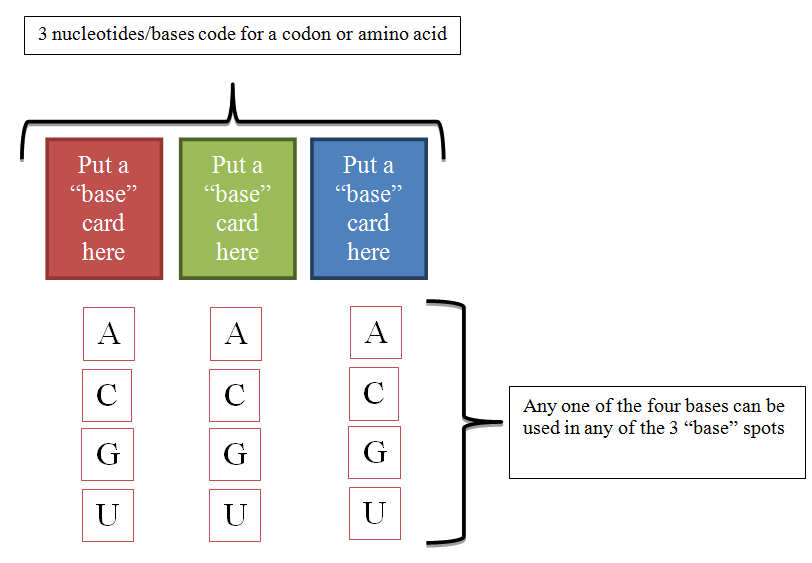Chapter 15 Online Worked Problem: Translation
Problem Statement
If there were five different types of bases in mRNA instead of four, what would be the minimum codon size (number of nucleotides) required to specify the following numbers of different amino acid types: (a) 4, (b) 20, (c) 30?
For help with this problem:
- Review Section 15.2 on The Genetic Code Determines How the Nucleotide Sequence Specifies the Amino Acid Sequence of a Protein.
- Review the section on Degeneracy of the Code, including Figure 15.10.
- Review End-Of-Chapter Problems 20 and 21.
Question
Begin by thinking about the steps to take to do this problem. Use the dropdown menu to put the steps in the order in which they should be performed.
| Identify the relevant information provided that will enable you to answer the question. | |
| Use the formula and relevant information to solve the specific question asked. | |
| Identify the mathematical relationship between the parts of the question. | |
| Identify the question being asked. |
Step 1: Identify the question being asked.
Question
What problem are you being asked to solve?
| A. |
| B. |
| C. |
| D. |
Step 2: Identify the relevant information provided that will enable you to answer the question.
Question
If there were five different types of bases in mRNA instead of four, what would be the minimum codon size (number of nucleotides) required to specify the following numbers of different amino acid types: (a) 4, (b) 20, (c) 30?
a. There is/are base(s) in this question, instead of the normal base(s).
b. Codon length, which is normally three bases, is now bases.
Step 3: Identify the mathematical relationship between the parts of the question.
Question
1. Let’s step through the process of seeing how many codons or amino acids are possible for 5 bases with increasing codon length. Let’s call the new base quartine, so we have the bases adenine, guanine, cytosine, thymine, and quartine. How many different codons (amino acids) could we specify with these 5 bases if only one base was needed to specify a codon (codon length of 1 base) ?
| A. |
| B. |
| C. |
| D. |
Step 4: Use the formula and relevant information to solve the specific question asked.
Question
1. With 5 bases, what is the minimum codon length to specify a minimum of 4 codons (amino acids)?
| A. |
| B. |
| C. |
| D. |


